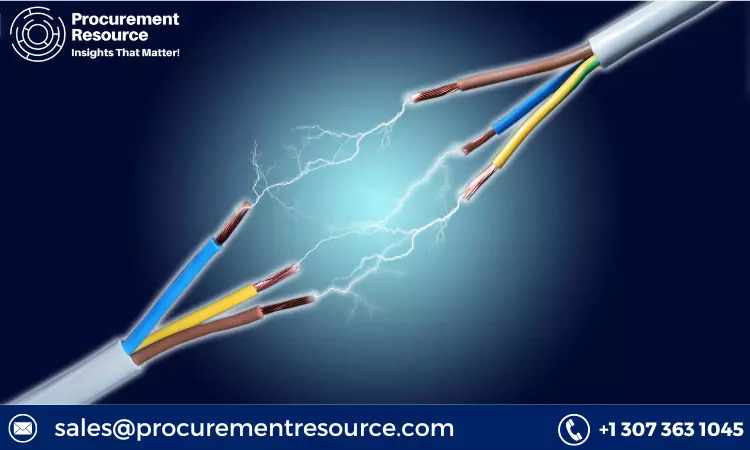
As one of the most versatile and widely used industrial metals, copper plays a crucial role in various sectors, including electronics, construction, power generation, and automotive manufacturing. Due to its conductivity and durability, copper is essential for producing everything from electrical wiring to plumbing systems. However, like any commodity, copper prices are subject to fluctuations influenced by a variety of factors, ranging from economic trends to supply chain dynamics. Understanding these trends is vital for businesses and investors looking to make informed decisions.
In this article, we’ll explore the latest copper rod price chart report, highlighting key price trends, factors driving fluctuations, and what it means for industries dependent on copper.
Why Monitor Copper Rod Prices?
Copper rods serve as a fundamental building block in numerous industries. Their usage ranges from constructing electrical cables and telecommunication wires to creating heating elements. Keeping track of copper rod prices is essential for companies that depend on copper for their production processes, as fluctuations can significantly impact profit margins and overall costs.
Monitoring copper rod prices provides valuable insights for businesses and investors by:
Request For Sample: https://www.procurementresource.com/resource-center/copper-rod-price-trends/pricerequest
Aiding in Budget Planning: Understanding the copper market trends helps businesses plan budgets accurately by anticipating material costs.
Timing Purchases and Sales: By analyzing price trends, businesses can strategically time their copper purchases and sales to optimize costs.
Evaluating Investment Opportunities: For investors, a thorough understanding of copper price movements can present opportunities for growth within the commodity markets.
Key Factors Impacting Copper Rod Prices
Understanding the underlying factors driving copper rod prices can help us better interpret the trends displayed on the price chart. Here are some of the main factors:
1. Global Supply and Demand
Copper is heavily impacted by supply and demand dynamics. For instance, demand spikes during periods of economic growth, particularly when countries are heavily investing in infrastructure and technological advancements. Conversely, oversupply due to increased mining activity or reduced demand during economic downturns can lead to lower prices.
2. Industrial Activity
As a critical component in manufacturing, copper prices are closely tied to industrial activity levels, especially in emerging economies. High industrial demand often leads to price surges, while low demand results in price drops.
3. Geopolitical Events and Trade Policies
Copper production and distribution are often influenced by political events and trade policies. For instance, sanctions, tariffs, and import-export restrictions can disrupt supply chains, impacting copper availability and pricing.
4. Currency Fluctuations
Since copper is traded globally and priced primarily in U.S. dollars, changes in currency values can affect international prices. A strong dollar makes copper more expensive for other countries, potentially reducing demand and causing prices to drop.
5. Technological Advancements
As technology advances, demand for copper in sectors like renewable energy, electric vehicles, and telecommunications is expected to rise. The growing use of copper in green technologies is a relatively new but important factor driving price trends.
Highlights from the Copper Rod Price Chart Report
The recent copper rod price chart report provides insights into current trends and anticipated shifts. Here are a few highlights:
Recent Price Trends: The price of copper rods has seen significant fluctuations over the past year. Economic recovery, increased infrastructure spending, and advancements in technology have led to growing demand, pushing prices up. However, periods of global uncertainty, such as trade disputes and economic slowdowns, have contributed to temporary price drops.
Monthly Price Changes: Analyzing the month-to-month changes reveals that copper rod prices are sensitive to economic reports and manufacturing indices. Price spikes often coincide with reports of increased manufacturing output, while decreases align with economic contractions.
Long-term Outlook: The copper rod price chart report suggests that the long-term outlook for copper is optimistic due to projected increases in demand, particularly in renewable energy and electric vehicles. However, this growth is expected to be gradual, with intermittent price volatility due to supply chain challenges and geopolitical factors.
Navigating Copper Rod Price Volatility
For industries dependent on copper, price volatility can pose challenges. Here are some strategies to mitigate the impact of fluctuating prices:
Hedging: Companies can use hedging instruments, such as futures contracts, to lock in copper prices and reduce exposure to price swings.
Diversifying Suppliers: By sourcing copper from multiple suppliers in different regions, companies can reduce reliance on a single source and better navigate supply chain disruptions.
Flexible Pricing Agreements: Establishing flexible pricing agreements with suppliers allows companies to adjust purchase quantities and prices based on market conditions.
Investing in Alternatives: For some applications, companies might explore alternative materials to copper, depending on feasibility, to offset risks associated with price fluctuations.
The copper rod price chart report provides valuable insights into current trends, drivers of price volatility, and long-term projections for copper rod prices. Understanding these factors can help businesses make informed decisions and manage risk in an ever-changing market. By staying informed and adopting strategic approaches, companies can better navigate the challenges and opportunities presented by the copper market.
Contact Us:
Company Name: Procurement Resource
Contact Person: Endru Smith
Email: sales@procurementresource.com
Toll-Free Number: USA & Canada - Phone no: +1 307 363 1045 | UK - Phone no: +44 7537 132103 | Asia-Pacific (APAC) - Phone no: +91 1203185500
Address: 30 North Gould Street, Sheridan, WY 82801, USA







Write a comment ...